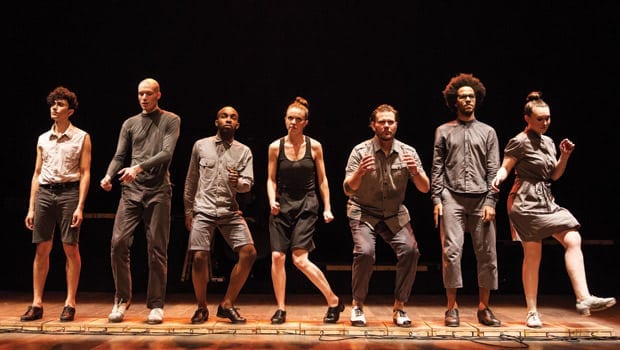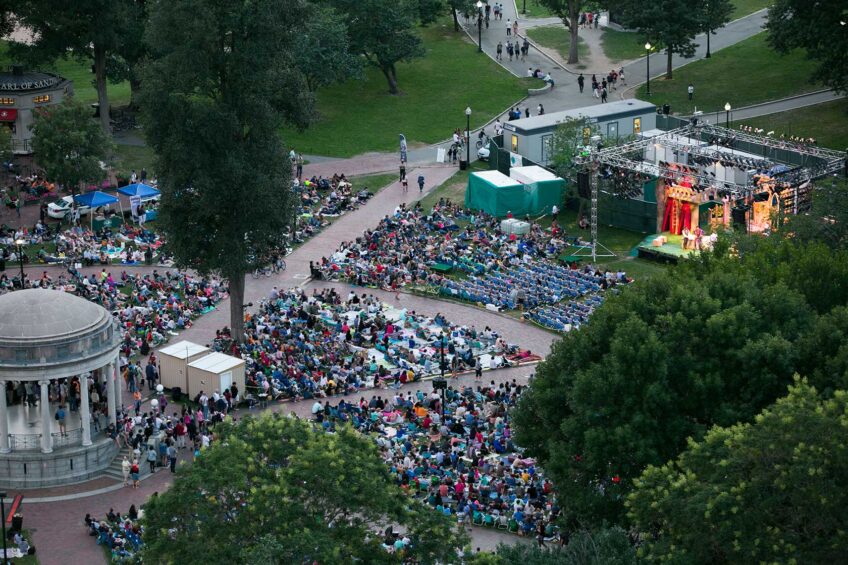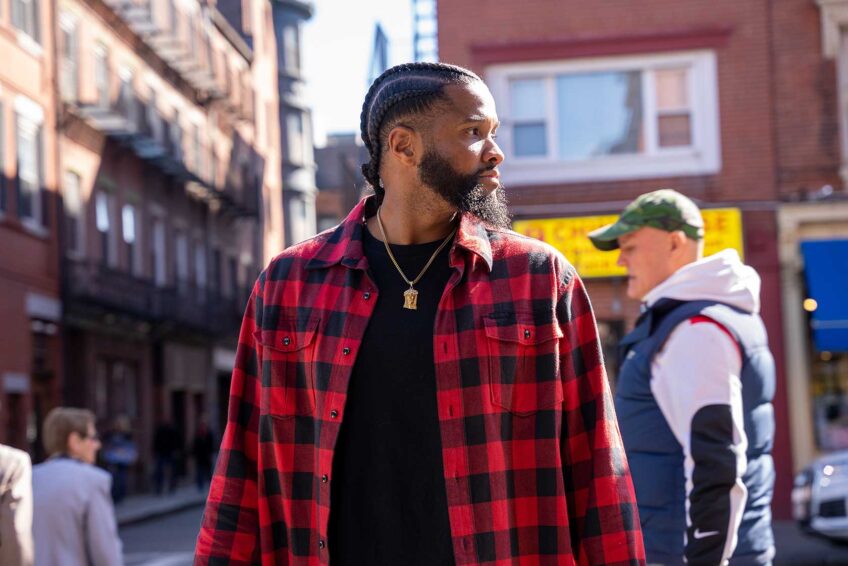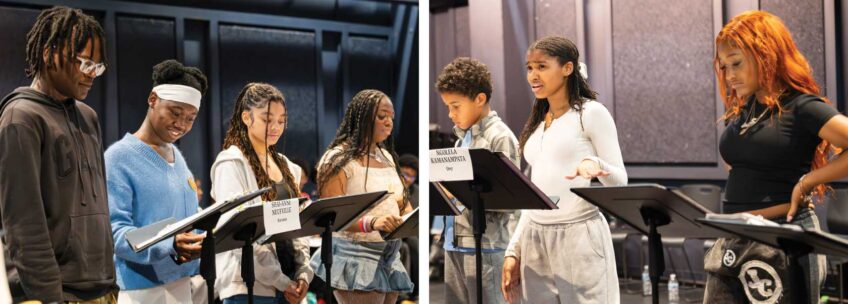Tap troupe Dorrance Dance performs at Emerson/Cutler Majestic Theatre

As a performer, choreographer, teacher and artistic director of her company, Dorrance Dance, Michelle Dorrance brings new dimensions to the art of tap dance.
Based in New York, Dorrance, 37, speaks of tap as the first American art form, created by slaves when their drums were taken away. Born by an insistent urge for free expression and rooted in the rhythms of dancing feet, the tap dance form is not frozen in time. Generations of artists have been drawn to tap, an art form that turns dancers into musicians, and they give it fresh life.
A tap performer since childhood, Dorrance spent four years with “STOMP,” that cavalcade of drummer-dancers that has stormed world stages since the ’90s. In 2010, Dorrance formed her own company and quickly garnered top dance awards. In 2015, she received a MacArthur Fellowship, also known as a “genius grant.” Her vein of tap celebrates the old masters of tap, combining their traditions with the imaginative reach of contemporary dance and a searching expressiveness that builds on the music of tapping feet.
All of these qualities were on view last weekend when World Music/CRASHarts presented “Dorrance Dance in Concert” in three shows at the Emerson/Cutler Majestic Theatre in Boston.
Choreographed and directed by Dorrance, with improvised solos by the dancers, the program explored the unique power of tap dance as an art of both sight and sound.
Beginning the show was a half-hour version of “SOUNDspace” (2013), an evening-length work that Dorrance developed at St. Mark’s Church in New York City. Using a variety of footwear, including old-school leather shoes with wood taps, the dancers mingled a century of tap dance sounds and styles.
Here, wearing rehearsal-style outfits and an array of shoes, the dancers shifted between improvisational solos and formations of drill-like precision. Lighting by Kathy Kaufmann created an aura around the first dancers, a group of four, highlighting the contours of their bodies as well as their feats of syncopated footwork, which they performed in unison, gliding across the stage as a single unit.
Groups and soloists came in and out of view, repeating, varying and layering rhythmic patterns and weaving a host of styles and sounds into a thrilling, astonishingly complex whole.
Showcase of styles
In her solos, Dorrance picked up phrases, downshifted or sped up their tempo and added still more rhythmic threads before sliding out of sight, only to reappear as part of the ensemble. Attired in a simple country girl dress, her black hair in a topknot as if to not distract from the action of her limbs and feet, Dorrance was a wonder to watch, mingling loose-limbed, fluid grace with staccato footwork.
Slowing things down was an introspective solo by Warren Craft. Bald and pale, and wearing a black turtleneck and pants, he was a spectral figure moving as if possessed by a foreign force. While making guttural sounds with his vocal chords, he jerked a shoulder or leg like a contortionist who was finding out that each limb had a mind of its own.
In contrast, burly, bearded Nicholas Van Young, a 13-year veteran
of “STOMP,” invited the audience into his solo. After accompanying his drumming feet with vocal clicks and rhythmic beats to his thighs and chest, he formed big circular arcs with his arms that closed with a loud communal clap.
After an intermission, Act II featured a medley of short works showcasing the styles and personalities of the dancers as they made music with their bodies and voices as well as their feet.
A few shifted between the dance floor and bandstand to join the musicians as they accompanied the dancers with songs by various artists, including Fiona Apple, the Squirrel Nut Zippers, Nat King Cole and Radiohead. Dorrance sang and played guitar, Claudia Rahardjanoto whistled and drummer/percussionist Van Young sat in with lead vocalist Aaron Marcellus, who had a fine falsetto. Joining in were the choreographer’s brother, Donovan Dorrance, on keyboards and guitar, and bassist Gregory Richardson. The two men, also vocalists, contributed original music to one of the works.
Silent but for footwork was a stirring duet between Dorrance and Craft, whose balletic training was visible in his slow, near-erotic interaction with Dorrance, which included long, exaggerated slides and gravity-defying leg extensions that evoked passion and risk.
A zest for showmanship also was on display. Combining choreography, music and costumes, the dancers conjured scenes of a vaudeville review, a ’30s roadhouse rag, a Parisian cabaret and, as a foursome with crisscrossed arms and stamping feet, a folk dance. Even a thread of rapid-fire flamenco stomping was audible in this tribute to the music of feet.
In the hands of Michelle Dorrance and her company, tap is the dance of democracy, an open and free medium of individual and communal expression with room for all.






